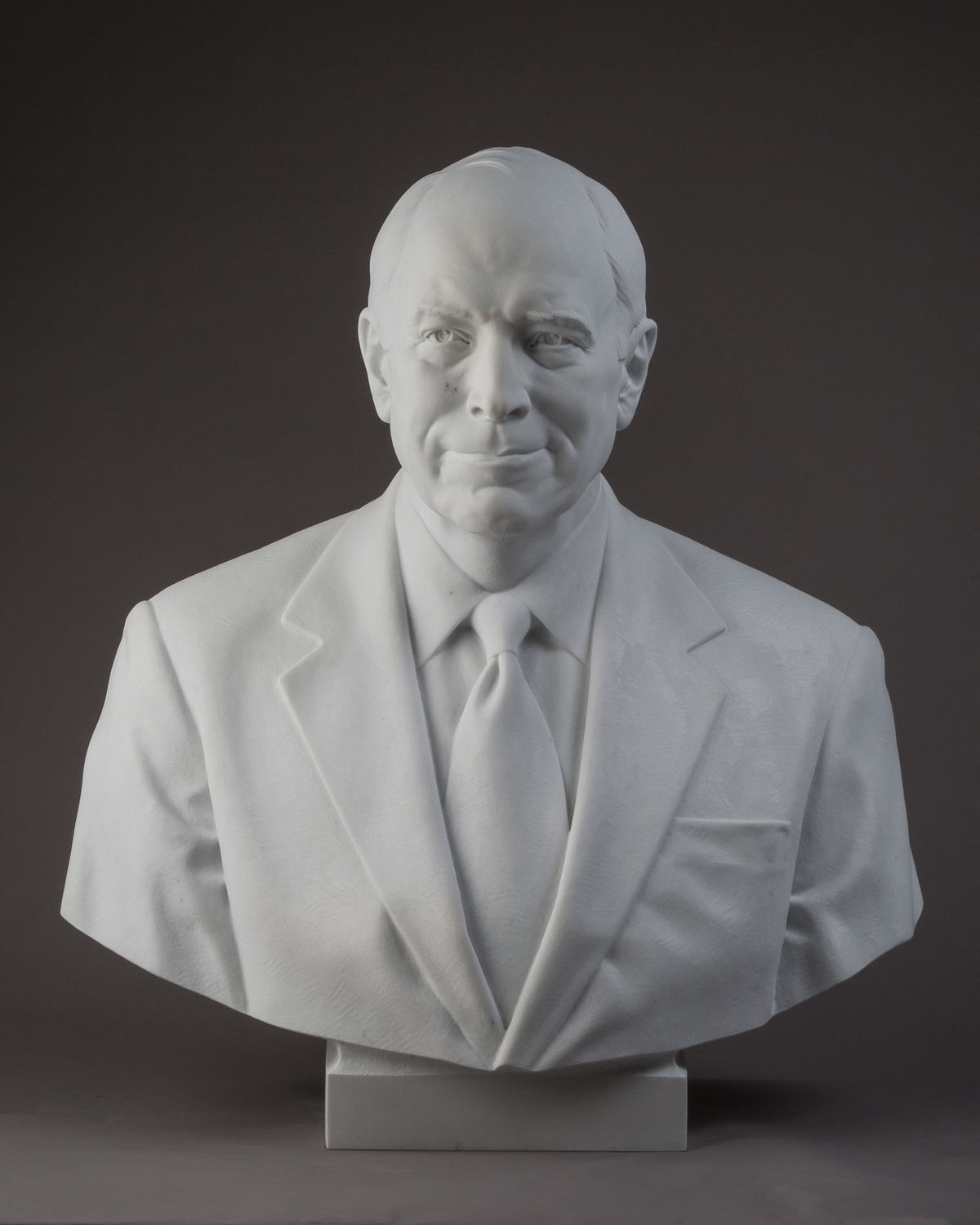
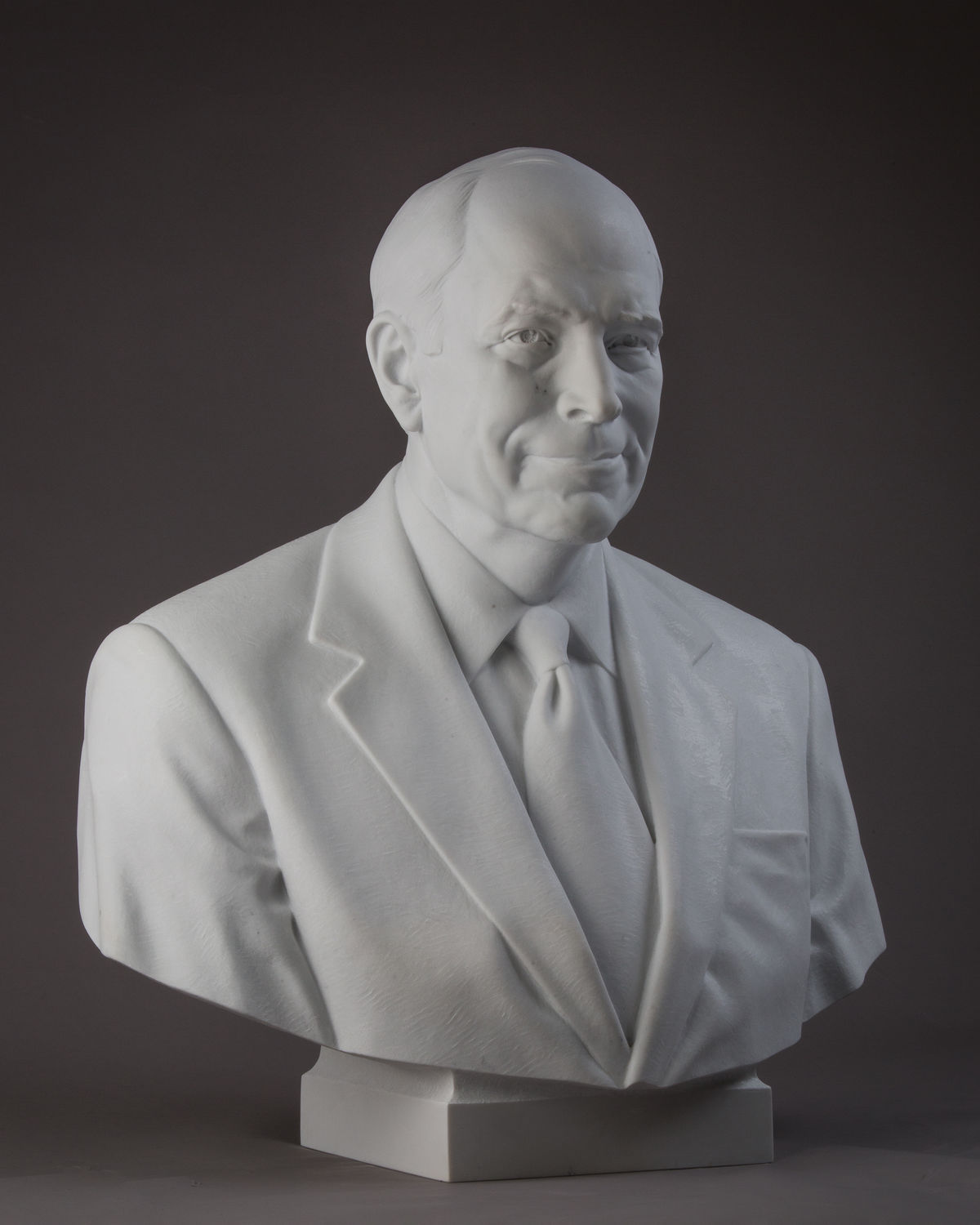
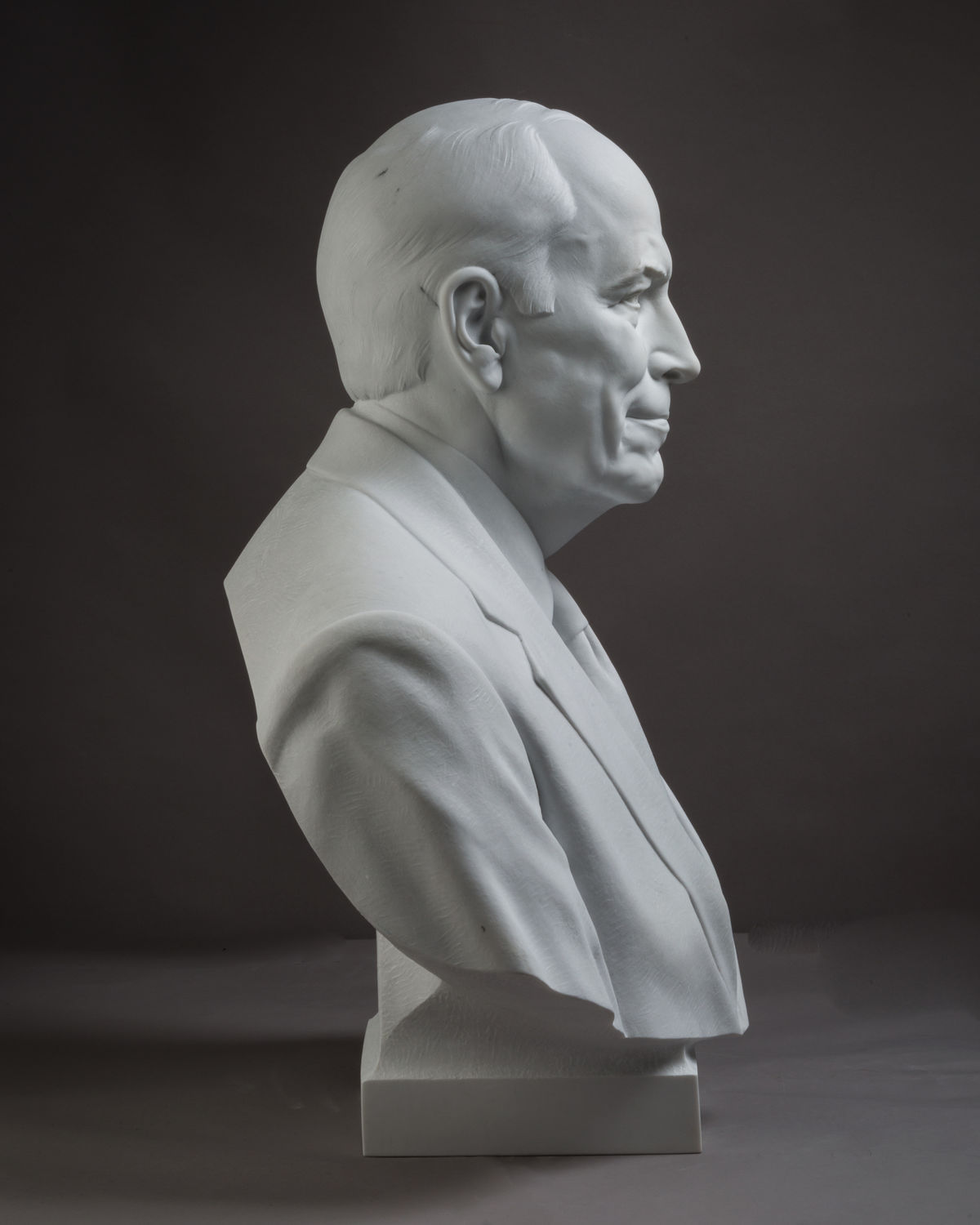
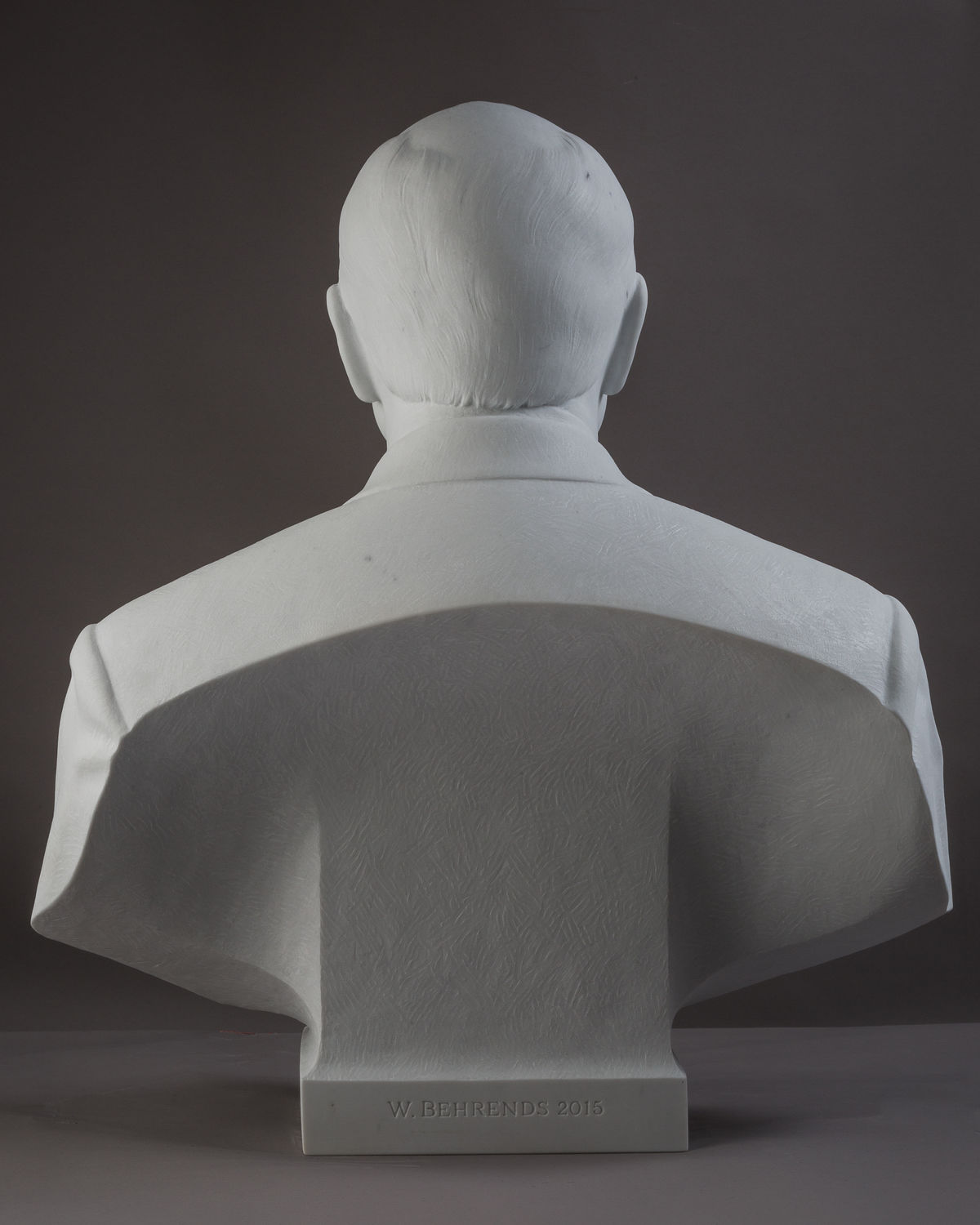
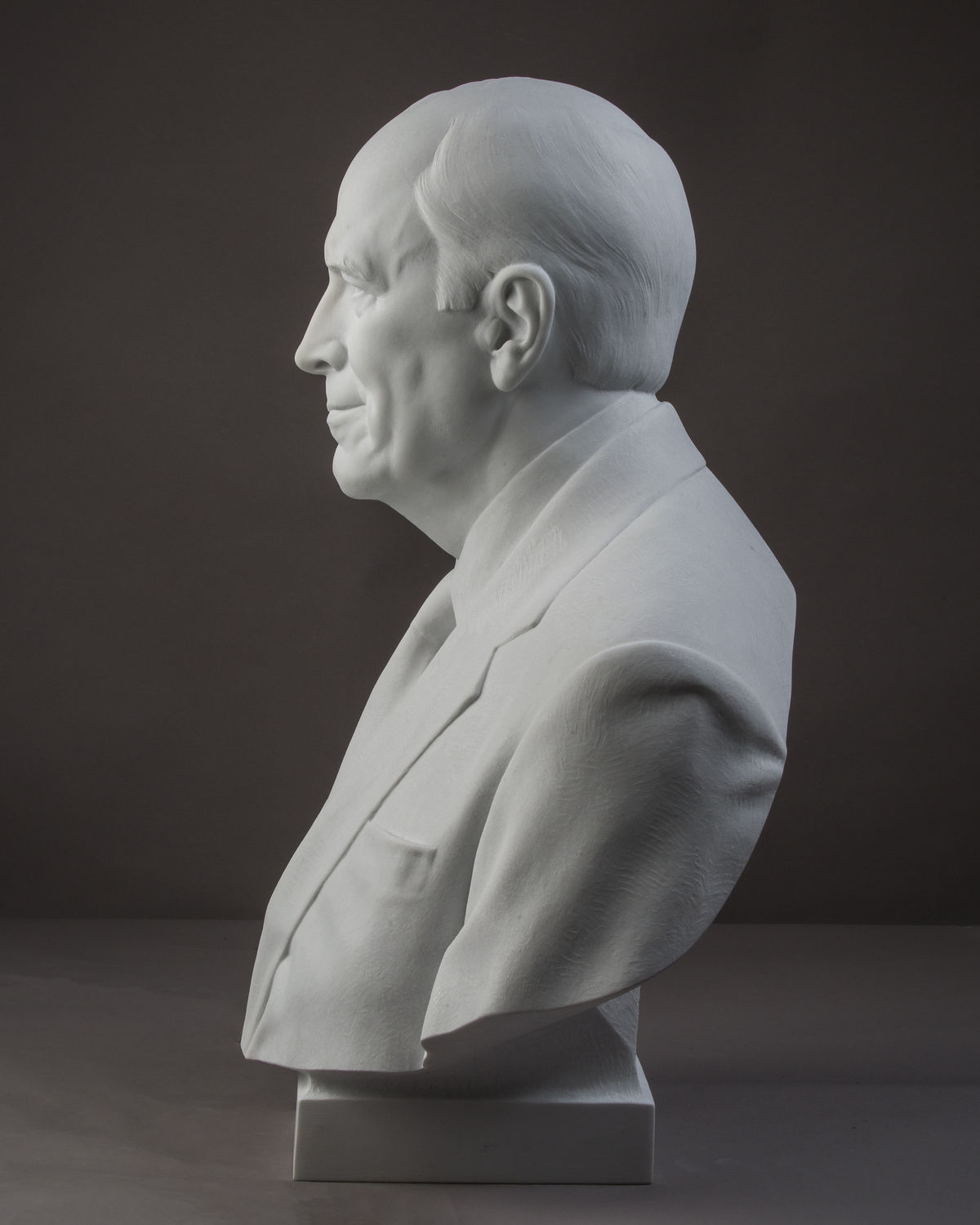
| Title | Richard B. Cheney |
| Artist/Maker | William Frederick Behrends ( 1946 - Present ) |
| Date | 2015 (carved), 2013 (modeled) |
| Medium | Marble |
| Dimensions | h. 28 x w. 25.25 x d. 11.5 in. (h. 71.12 x w. 64.13 x d. 29.21 cm) |
| Credit Line | U.S. Senate Collection |
| Accession Number | 22.00045.000 |
Richard B. Cheney selected William Behrends to sculpt his portrait in marble for the Senate’s Vice Presidential Bust Collection in September 2011. Behrends met with Vice President Cheney one month later to take measurements and photographs in preparation for the clay model. Mrs. Cheney, the daughters, and the grandchildren took an interest in the artistic process and enlivened the numerous sittings at the Cheney home. The artist also relied on images of the vice president when he served from 2001 to 2009 under President George W. Bush.
Following approval by the vice president of the full-sized clay model, Behrends cast a plaster bust which served to guide the carving of the marble. Unlike Behrends’ typical process of roughing out marble sculptures in Italy and finishing them in the United States, the Cheney bust was carved completely in Behrends’ North Carolina studio. Behrends initially carved the marble with diamond-tipped saws, as well as pneumatic and hand chisels. The finer details were then rendered using a set of vintage hand-made chisels given to the sculptor by a master carver in Italy. The finished work was accepted by the Senate Committee on Rules and Administration in 2015.
Behrends studied architecture at North Carolina State University and completed his academic studies in fine arts and sculpture at the University of North Carolina at Chapel Hill. He furthered his training in Pietrasanta, south of Carrara, Italy, where carvers of fine sculpture still follow traditional methods. He currently maintains a studio in Tyron, North Carolina. Other works by the sculptor include a monumental bronze bust of Andrew Johnson at the Tennessee State Capitol, a statue of Henry Ford II at Ford World Headquarters in Detroit, and a bronze statue of Buck O’Neil at the National Baseball Hall of Fame in Cooperstown, New York. Behrends has completed three vice presidential busts for the Senate: Vice President Spiro T. Agnew in 1995, Vice President Richard B. Cheney in 2015, and Vice President Albert A. Gore in 2017.
The marble bust of Vice President Dick Cheney was unveiled on December 3, 2015, in Emancipation Hall of the U.S. Capitol Visitor Center and placed on permanent display in the Senate wing of the U.S. Capitol.
Richard Bruce Cheney was born in Lincoln, Nebraska, on January 30, 1941. His father was an agent for the U.S. Soil Conservation Service, which required the family to relocate to Wyoming when Cheney was thirteen. Growing up in Casper, Wyoming, Cheney played football and baseball, fished, and hunted rabbits. He was co-captain of the high school football team and dated the school’s homecoming queen, Lynne Vincent, whom he married in 1964.
Following three semesters at Yale University, Cheney obtained both a bachelor of arts and a master of arts degree in political science from the University of Wyoming. In 1969, having accepted an American Political Science Association fellowship to spend a year on Capitol Hill, he began working in the office of Wisconsin Representative William Steiger. The next year, he joined the staff of the Office of Economic Opportunity, where he worked with director Donald Rumsfeld. As special assistant to the president, Rumsfeld began taking Cheney to the West Wing for daily staff meetings. In 1975, at only thirty-four years of age, Cheney became the White House Chief of Staff to President Gerald Ford.
In 1978 Cheney ran for Wyoming’s sole seat in the House of Representatives, defeating the Democratic candidate with 58.6 percent of the vote. Reelected to the House five times, he served on the Interior and Insular Affairs Committee, whose jurisdiction covered matters of vital concern to his state, and worked to enact President Ronald Reagan’s tax cuts and foreign policy initiatives. During his second term, he was elected chair of the House Republican Policy Committee and later was chosen by House Republicans to be their conference chairman and minority whip.
President George H. W. Bush nominated Cheney to be secretary of defense in 1989. The Senate confirmed his nomination with a 92-0 vote and he held the position throughout President Bush’s term in office. When that administration ended in 1993, Cheney served as a senior fellow at the American Enterprise Institute before becoming chairman and CEO of Halliburton, a multinational energy services and construction company, in 1995.
On January 20, 2001, Richard Cheney became the 46th vice president of the United States and subsequently played an active and influential role in the administration of President George W. Bush.